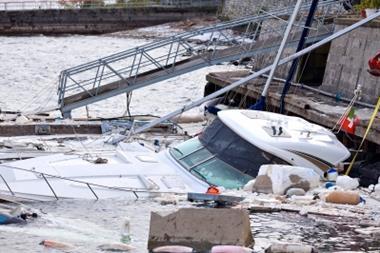Black Swans are highly improbable, often unforseeable, game-changing events, such as the disappearance of Flight MH370. So, how do they affect the practical world of risk management?

Knowing what to do when that enigmatic black bird lands implies thinking in advance about how to react to what can reasonably be predicted and creating an enterprise-wide ability to adapt to the unexpected.
“It is vital to understand your threats,” says Andrew Coburn, director of the Cambridge Centre for Risk Studies’ external advisory board. “How likely is a disruption from external threats? Businesses need to know where threats are and how often they happen and map this onto their risk atlas.
“This is what sophisticated businesses are starting to do. In the past, it was more about internal risk: a fire at a supplier, for example. Nowadays, the attention is more external.”
However, this mapping is still “not that good” currently, according to Coburn, and modelling can form only part of risk planning. “Good risk models are available, but they are, by and large, not yet adapted to the supply chain model and a lot of work needs to be done on supply chain analytics,” he says.
Increasingly advanced digital simulations are improving the situation (see ‘Digital world disaster’), but more time and investment are still required to develop the medium’s potential.
In addition, obtaining an accurate picture of a firm’s exposure does not only depend on gathering precise environmental risk data, but it also requires an accurate appreciation of the nature and spread of its operations – something that is rarer than it should be.
“Unfortunately, few firms have a good top-down view of their entire operation,” says Coburn. “Obtaining the full picture of who is doing what, where and with how many people,
producing how many dollars of production, is still a challenge.
“This information needs to be consolidated and co-ordinated better. A strategic view of the company as a whole is required to model risk.”
With so much uncertainty, a key consideration remains ensuring that business planning cycle expects disruptive events to occur. It should not be assumed that the everyday
operations will continue forever.
Companies need to ask themselves what kind of scenarios might occur and then develop a toolkit to react.
However, it is also important to remember that experiencing exactly what has been planned is unlikely. However sophisticated a modelling is, and however many potential scenarios have been explored, it is still critical to have the ability to react to and recover from the unexpected.
“Businesses have always faced uncertainty,” says Rade Musulin, chief operating officer of Aon Benfield Analytics Asia-Pacific. “In recent times, perhaps we have been lulled into a false sense of security by sophisticated models and technology. People who think uncertainty has been tamed will be frequently surprised; those who manage uncertainty and build resilient organisations will prosper.”
They key to survival
Carl Leeman, chief risk officer at logistics firm Katoen Natie and vice-president of the Belgian Risk Management Association says: “Two plans on paper are necessary: one that reflects the real risk where a business is operating, and another that gives it the ability to react to the unexpected.
“Of course, every company needs a continuity plan. However, if the banking system collapsed, it is hard to see how to prepare for everything that would happen.
“The most important thing is to be in as good a shape as possible and have a lean company that can change quickly; an organisation that can adapt and change its strategy fast. This is the key to survival in the modern business world. Risk managers need to help their boards to get the company into that position.
“Too many ‘risk managers’ are in reality insurance managers, and although there is nothing wrong with that, they are not having [the right] influence on their boards,” he says. “So much risk is now beyond insurance. Every single employee must be risk aware and be trained to manage their own risks.”
In the end, however, what will real build resilience in a firm goes beyond paper planning and desktop assessments. Emotional and intellectual toughness will be required and, to
survive, the right attitude should be cultivated.
“The risk community nowadays has no shortage of data and information,” says Gordon Song, a senior aviation risk manager speaking in a personal capacity.
“The challenge now is not in knowing, but in believing… believing that these events can happen and that they can cause substantial damage.
“Knowledge by itself does not lead to actions. Only belief does and, unfortunately, this is the biggest hurdle risk managers face currently.”




















No comments yet